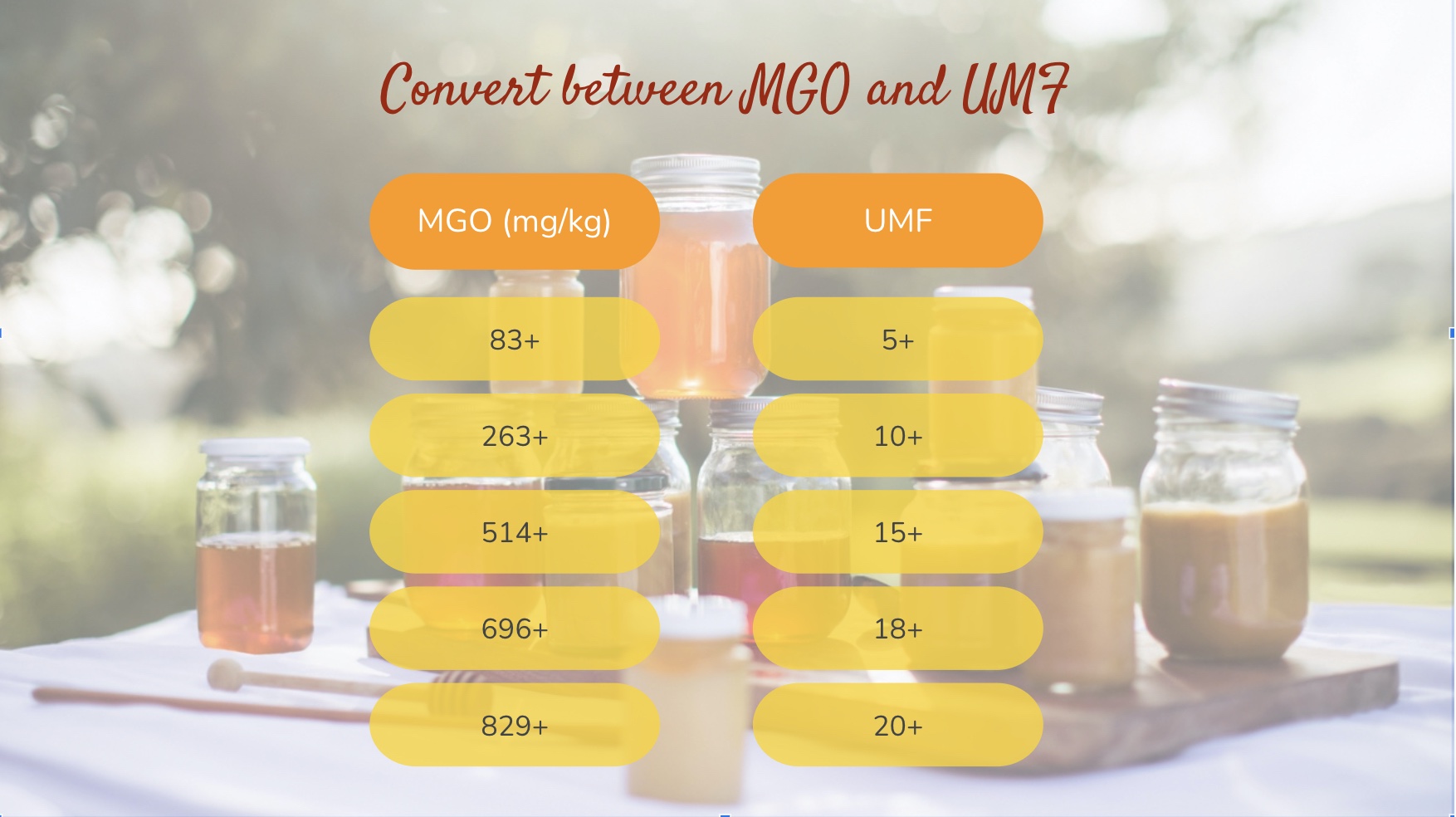What's the Difference Between MGO and UMF?
4th November 2021
MGO (short for methylglyoxal) is a naturally occurring chemical in
manuka honey that indicates the strength of a honey's anti-bacterial properties. So an MGO rating of 83+ means there is at least 83mg of MGO per kg of honey.
UMF (Unique Manuka Factor) is another industry-accepted rating for manuka honey. The key component of this rating is MGO levels, but it also takes into account the amounts of DHA (dihydroxyacetone) and leptosperin, a manuka-specific chemical, present in the honey.
Both MGO and UMF values indicate the level of anti-bacterial activity. So the higher the rating, the higher the anti-bacterial potency, and therefore the greater the potential health benefits.
However, many honey producers prefer to use the MGO standard as there is a linear relationship between the rating and the amount of anti-bacterial activity. For example, a honey with an MGO 263+ rating means it has just over half of the anti-bacterial activity as one with a rating of MGO 514+.
Use the handy table below to help you convert between MGO and UMF ratings.

